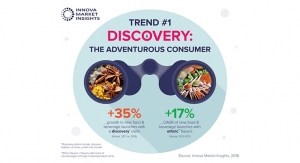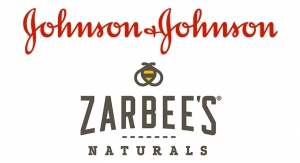By Joyce Cao, Senior Analyst of Global Consumer Safety, Herbalife Nutrition12.03.18
Consumer health questions garner valuable insight into consumer attitudes and behaviors and provide opportunities for educational initiatives. However, consumer health questions are typically lengthy, complex text, and often utilize open-domain language rather than medical terminology.
With so much text-based data coming in, how does a company figure out what's important? That's where text mining comes in.
Text mining is the process of extrapolating high-quality, concise content from complex consumer text. High-quality information is typically identified by using patterns and trends through means such as statistical pattern learning. Text mining usually involves structuring a search within the text received, deriving patterns within the search results, and finally evaluation and interpretation of those results.
Text mining is trending in social media right now, especially Twitter-mining. For me, I think it's encouraging to see analytics in the industry incorporate more text-based analysis (moving from numbers to words). I like to think of text mining as finding a needle in a haystack. However, it is a worthwhile effort which can help companies create more effective learning strategies for consumers.
To develop a framework for analyzing consumer health questions, at Herbalife Nutrition we decided to conduct a text mining study. We extracted consumer health questions created in the Herbalife Nutrition internal knowledge management system in 2017. Those questions were analyzed, and the most frequently occurring terms, in descending order, were: product, shake, weight, use, and loss. This is consistent with the sales volumes for products used for weight loss and weight management.
We then performed word associations on high frequency terms to find correlations with other terms, specifically terms related to product safety. For example, for the key term “safe,” the top associated terms were “breastfeeding” and “pregnant,” which indicates a specific consumer population concerned with safe product use. Another theme was around the key term “protein” and associated terms related to product use, such as “advice,” “labels,” and “recommendations.”
Consumer health questions are also categorized by MedDRA (Medical Dictionary for Regulatory Activities) System Organ Class (SOC), a classification level within the dictionary, which allows for a more targeted analysis. An example for the framework applied to the MedDRA SOC categorization is for consumer health questions categorized under the Endocrine disorders SOC, where there is a correlation between product use and diabetes.
Through our Health Science Information management function, Herbalife is able to provide nutrition safety education (NSE) to consumers. We use NSE to help support consumer advocacy and to help consumers make informed product choices. Herbalife also leverages health science data from consumer questions to continuously improve our NSE initiatives. These initiatives are important because they encourage informed product use to support consumer safety, company transparency, industry and brand confidence, and favorable product use experiences.
Though challenging compared to more standardized data sources, text mining techniques can be used as a framework for analyzing consumer health questions and their complexities. Frequently occurring words elucidate the topics of greatest interest to consumers, and word associations provide general context to the key terms and the questions being asked. Categorizing consumer health questions creates the opportunity to perform more targeted analyses, particularly for identifying consumers with questions around pre-existing health conditions they may have. This framework can be used to guide the development of targeted educational materials related to healthy and safe product use for consumers.
With so much text-based data coming in, how does a company figure out what's important? That's where text mining comes in.
Text mining is the process of extrapolating high-quality, concise content from complex consumer text. High-quality information is typically identified by using patterns and trends through means such as statistical pattern learning. Text mining usually involves structuring a search within the text received, deriving patterns within the search results, and finally evaluation and interpretation of those results.
Text mining is trending in social media right now, especially Twitter-mining. For me, I think it's encouraging to see analytics in the industry incorporate more text-based analysis (moving from numbers to words). I like to think of text mining as finding a needle in a haystack. However, it is a worthwhile effort which can help companies create more effective learning strategies for consumers.
To develop a framework for analyzing consumer health questions, at Herbalife Nutrition we decided to conduct a text mining study. We extracted consumer health questions created in the Herbalife Nutrition internal knowledge management system in 2017. Those questions were analyzed, and the most frequently occurring terms, in descending order, were: product, shake, weight, use, and loss. This is consistent with the sales volumes for products used for weight loss and weight management.
We then performed word associations on high frequency terms to find correlations with other terms, specifically terms related to product safety. For example, for the key term “safe,” the top associated terms were “breastfeeding” and “pregnant,” which indicates a specific consumer population concerned with safe product use. Another theme was around the key term “protein” and associated terms related to product use, such as “advice,” “labels,” and “recommendations.”
Consumer health questions are also categorized by MedDRA (Medical Dictionary for Regulatory Activities) System Organ Class (SOC), a classification level within the dictionary, which allows for a more targeted analysis. An example for the framework applied to the MedDRA SOC categorization is for consumer health questions categorized under the Endocrine disorders SOC, where there is a correlation between product use and diabetes.
Through our Health Science Information management function, Herbalife is able to provide nutrition safety education (NSE) to consumers. We use NSE to help support consumer advocacy and to help consumers make informed product choices. Herbalife also leverages health science data from consumer questions to continuously improve our NSE initiatives. These initiatives are important because they encourage informed product use to support consumer safety, company transparency, industry and brand confidence, and favorable product use experiences.
Though challenging compared to more standardized data sources, text mining techniques can be used as a framework for analyzing consumer health questions and their complexities. Frequently occurring words elucidate the topics of greatest interest to consumers, and word associations provide general context to the key terms and the questions being asked. Categorizing consumer health questions creates the opportunity to perform more targeted analyses, particularly for identifying consumers with questions around pre-existing health conditions they may have. This framework can be used to guide the development of targeted educational materials related to healthy and safe product use for consumers.

























